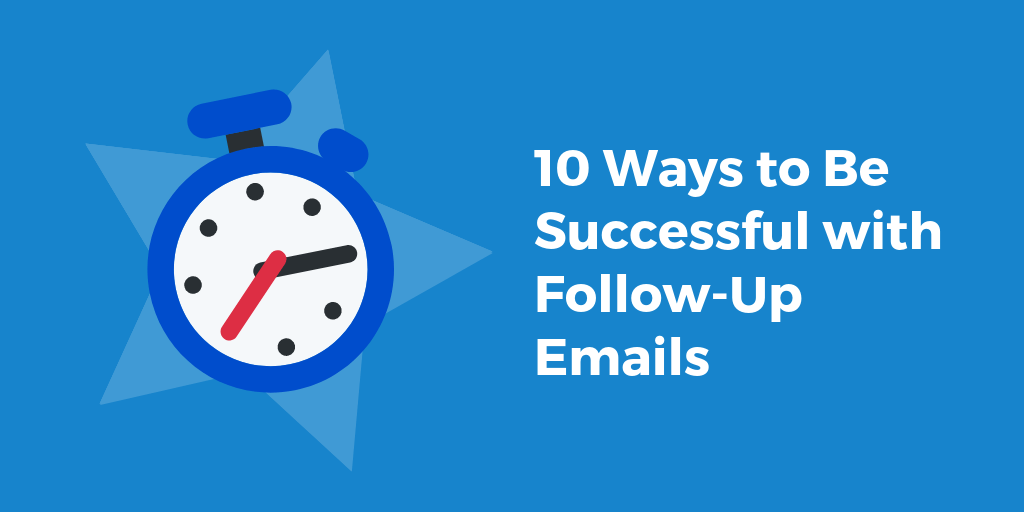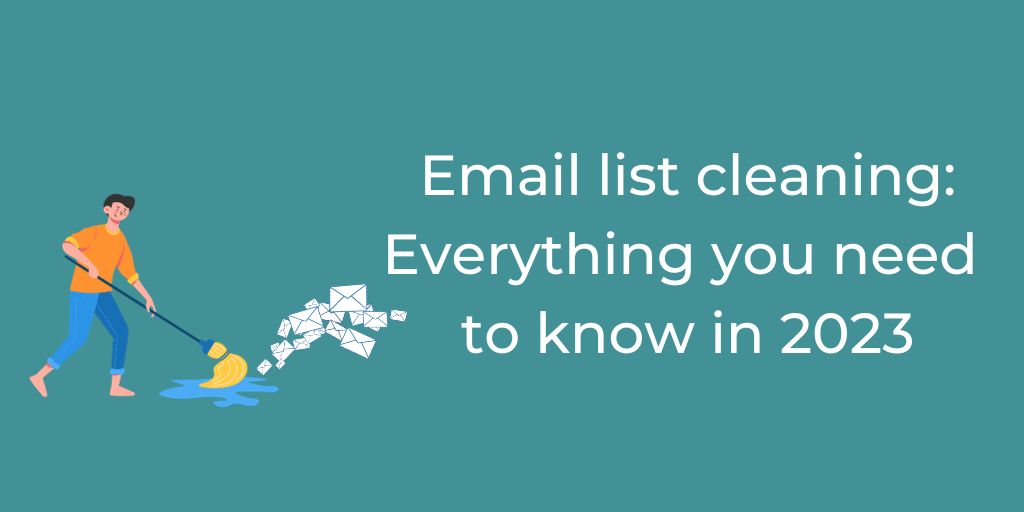
Quick links
It’s pretty common for your first email to not get a response.
No reason to get discouraged though, this is common and the reason why it’s important to know how to do follow-ups the right way. Here are ten ways to be successful with follow-up emails.
Personalization on a mass scale
Behind every lead is a person who values their time and privacy. They’re smart and usually don’t appreciate being interrupted for something like a sales pitch (even if it’s a good one). Keep this in mind when you’re writing your follow-up emails.
You’re not going to get a lot of people replying quickly and positively. This kind of strategy is all about being patient and personal.
Obviously, you can’t write each person a specially crafted and personalized email, that’s just not economical. But you can make it feel as if that’s what you did. Segment your list into persona groups and write emails aimed at each of those groups. – Jenna Jackson, email marketer at Academized
What’s your plan?
You should be thinking several steps ahead when you’re conducting a follow-up email campaign. What are you trying to achieve with your message?
Each email should have a clear purpose for communication, otherwise you are just wasting your time, as well as the recipient’s. It’s not just about your goals, though, you should also be considering what your audience is looking for.
Don’t write a follow-up email if you don’t have anything new to offer them or tell them about. In other words, don’t email just to “check-in.” Maybe you’ve got some new resources or information to offer, or you’re asking them for information you can use to help them with their decision.
Timing is important
So how long should you wait before sending out that follow-up email?
The answer is… it depends.
You definitely want to keep the situation progressing, but without seeming like you are spamming them. The best way to go is to agree with your lead on an ideal time for follow-up. But since that’s not always possible, or perhaps you forgot to, let’s start talking about approximate guidelines.
- If you’ve already had a meeting and would like to follow-up to remind them of the next step, then contact them within 24 hours. But if you’re following up on a previous email or you’ve given them a lot to think over, then wait two days.
- It’s wise to send email at different days and times, just so they’re not always being delivered at a bad time.
- If you’re interacting with someone you’ve never met with, then don’t send any more than three follow-ups.
- Every niche and situation are different, so definitely adjust this rule if you find it necessary. It never pays to be a slave to the template.
Start off right
If you write a bad subject line, your email is dead on arrival. People get a ton of email, so you need to give them a reason to open yours.
Make your subject line short, punchy, and to the point (remember what we said about wasting people’s time). Make them conversational, like you’re speaking with a friend (but keep them G-rated, of course). – Michael Weeks, sales manager at Australian help and Stateofwriting
People like when you use their name, so address them or their company by name in your subject line.
Writing the main body
Do whatever you can to ensure your emails do not sound like robotic, automated mass emails. Of course, you can get inspiration from follow-up email templates, but you shouldn’t copy them word by word. Always add a touch of personalization to your emails.
However, there is a right way and a wrong way to personalize this type of communication.
- Don’t just shoehorn the recipient’s name, alma mater, or business into your message. You’re much better off doing some real research so you can reference some work the person has done or something unique and relevant about their company.
- You really only need to personalize the first sentence or two.
- Don’t waste time, get to your point, and be upfront from the get-go about what your purpose is. Trying to get creative and trick the reader into reading your pitch doesn’t work and is a waste of time and energy.
- Ask yourself, is what I’m offering actually relevant to this person? You could have a great new offer or valuable information, but if it’s not something that applies to the particular person, it’s not actually valuable.
Just keep the ball rolling
You should always be thinking of your call to action (CTA). Everything you write should be aimed at moving the person towards a decision that leads to that CTA. Write short and convincing CTAs and remember that a lot of time the answer will be no, and that’s okay.
It’s much better to get those CTAs out there and get an answer than to waste time beating around the bush and sending emails without one.
Use automation tools
Follow-up emailing is a numbers game, so it’s important to familiarize yourself with and use automation tools to save time.
- Start with LinkedIn, which is a great source for finding contact information and building your list.
- Close.io is great for organizing your sales and email workflow into a central location.
- MailChimp is the standard for email marketing, so definitely use it to automate your follow-up email campaigns.
- Yesware can help by syncing with CRM data and giving you analytics suited to the kind of email campaign you’re after.
When should you stop?
Persistence is important, but so is knowing when it’s time to stop.
An email campaign is very cheap, but it does consume resources, so it pays to know when it’s not worth it to continue with someone. Your final message should be a polite email saying goodbye and providing one last chance to get involved.
Keep things light and don’t forget to give them a link to the most relevant info you have (just in case).
Collect and analyze your data
Even if you don’t get any replies, your follow-up campaign can still be useful.
That’s because now it’s time to analyze the data and see what you can learn. If your campaign wasn’t as successful as you’d like, you can make the next one better if you do the work.
You’ll be much more successful if you invest in some analytics software and run some A/B tests to see what works and what doesn’t. Determine which of your email templates got the most replies and whether those replies translated into actual conversions.
Here’s some data on what the best salesmen do before and after their follow up campaigns.
Be flexible
Every situation is different and general best practices don’t apply to everything.
- Once your follow-up campaign is underway, don’t be afraid to make changes.
- Don’t get stuck in a pattern just because it seems like a good idea, or it worked for somebody else.
Things change, and a strategy that used to work great could stop being effective. That’s why it’s so important to keep testing and re-evaluating your ideas. Leave your ego at the door and learn to admit when something isn’t panning out.
Conclusion
Being successful with follow-up emails means walking the tightrope of personalizing to a large audience. It means experimenting with different templates, subject lines, and timing. There are some best practices, which have been discussed in this article, but the critical thing is to get the data, analyze and be prepared to change course and experiment.

Nora Mork is a marketing and business journalist, and a content manager at UK Writings and Essay Roo. She enjoys sharing her experience by speaking at public events, and writing stories for websites, such as Boom Essays.
Join Our Monthly Newsletter
Learn how to improve email deliverability and clean your email lists with and more.






